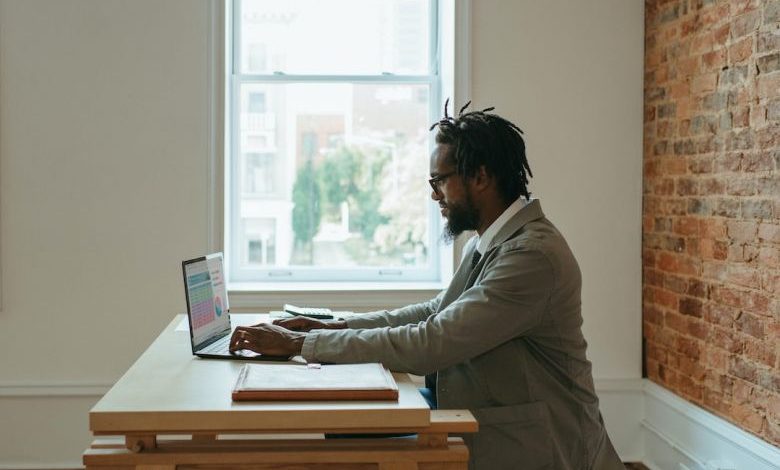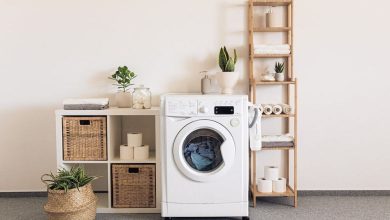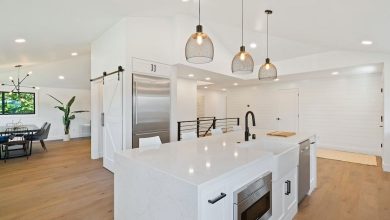How to Design an Efficient Home Office?

Working from home has become increasingly popular in recent years, and with the recent global pandemic, it has become a necessity for many. Whether you are a full-time remote worker or someone who occasionally brings work home, having a well-designed and efficient home office is crucial for productivity and focus. In this article, we will explore some key tips and strategies to help you design an efficient home office that maximizes your productivity and enhances your overall work experience.
Create a Dedicated Workspace
One of the first steps in designing an efficient home office is to create a dedicated workspace. This means setting aside a specific area in your home that is solely dedicated to work-related activities. This space should ideally be separate from the rest of your living areas, such as the bedroom or living room, to minimize distractions and create a boundary between work and personal life.
Invest in a Comfortable Chair and Desk
A comfortable chair and desk are essential for long hours of work. Your chair should provide proper support for your back and neck, and be adjustable to suit your height and preferences. Similarly, your desk should be at a suitable height and have enough surface area to accommodate your work materials, such as a computer, notebook, and other essentials. Consider investing in an ergonomic chair and an adjustable standing desk to promote good posture and reduce the risk of back pain or other discomforts.
Ensure Sufficient Lighting
Proper lighting is crucial for a productive home office. Natural light is ideal, as it not only brightens up the space but also improves mood and focus. Position your desk near a window if possible, and use light-colored curtains or blinds to allow maximum light in. In addition to natural light, incorporate task lighting, such as a desk lamp, to provide adequate illumination for specific work tasks, especially during the evenings or on cloudy days.
Organize Your Supplies and Equipment
A cluttered workspace can hinder productivity and increase stress levels. Take the time to organize your supplies and equipment in a way that is easily accessible and visually pleasing. Utilize storage solutions like shelves, drawers, and file cabinets to keep your work materials neat and tidy. Invest in organizers and trays to keep smaller items like pens, paper clips, and cables sorted and within reach.
Minimize Distractions
Working from home can be challenging due to various distractions, such as household chores, family members, or the temptation to binge-watch your favorite TV series. To design an efficient home office, it is crucial to minimize distractions as much as possible. Consider using noise-canceling headphones to block out noise, setting boundaries with family members or roommates, and creating a daily schedule or to-do list to stay focused and on track.
Incorporate Personal Touches
While it is important to create a dedicated and professional workspace, don’t forget to incorporate personal touches that make the space feel inviting and inspiring. Hang artwork or photographs that bring you joy, place a small plant or succulent on your desk for a touch of nature, or add a comfortable rug or cushion to make the space cozy. These personal touches can help create a positive work environment and boost your overall well-being.
Ensure a Strong Internet Connection
A strong and reliable internet connection is crucial for remote work. Make sure your home office is equipped with a high-speed internet connection to avoid frustrating delays or disruptions during important video calls or online research. Consider investing in a Wi-Fi extender or a mesh network system to ensure a strong signal throughout your workspace.
Take Breaks and Move Around
Lastly, remember to take regular breaks and move around to avoid sitting for prolonged periods. Incorporate breaks into your work schedule and use this time to stretch, walk around, or do some quick exercises. Not only will this benefit your physical health, but it will also refresh your mind and help maintain focus and productivity throughout the day.
In conclusion, designing an efficient home office is essential for a productive and enjoyable work experience. Create a dedicated workspace, invest in comfortable furniture, ensure sufficient lighting, organize your supplies, and minimize distractions. Don’t forget to incorporate personal touches and prioritize a strong internet connection. Remember to take breaks and move around to maintain your well-being. By implementing these tips, you can create a home office that maximizes your productivity and enhances your overall work experience.




